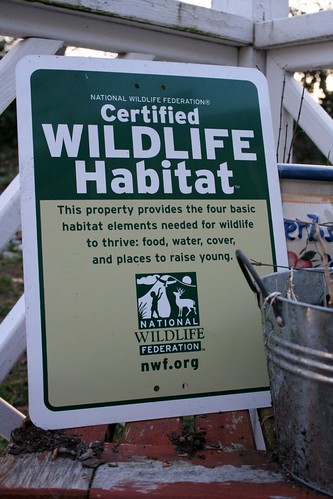
Who lives at your address?
This question may have come up recently, as you were filling out your census form. But I wonder, when you were counting up the human beings who call your place "home," did you think about the critters? You may already be playing host to a myriad of creatures, big and small -- and that's a good thing.
As homeowners and gardeners, we sometimes have a knee-jerk anti-critter response. We don't think of animals like mice as wildlife, we think of them as pests. And while we may not want them obliterated from the earth (rabbits are cute, after all), we certainly don't want to encourage them. This is why some people look at me funny when I tell them that our backyard is a Certified Wildlife Habitat.
Development continues to encroach on once-wild areas of our country, leaving many creatures homeless. These creatures can become pests in our neighborhoods when they can't find what they need. The interesting thing is that when you create a haven for wildlife in your backyard, when you provide an environment that can support a diverse and thriving ecosystem, the mice stay outside. Okay, yes, I do lose some carrots to the rabbits. I try to protect my crops as best I can and let it go. But we gain so very much from the proximity of our small neighbors.
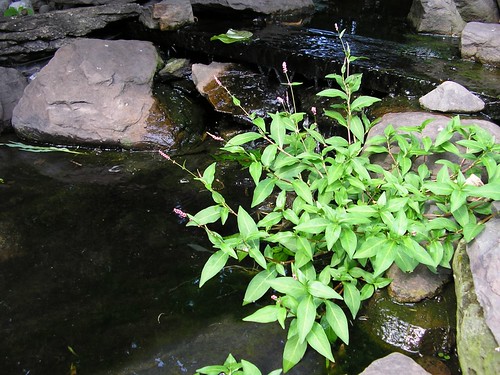
Some of the ways we make our yard welcoming to wild creatures are:
Provide a water source. We have a man-made backyard pond, which is lovely to look at and allows me to grow aquatic plants like water lilies. But in addition to being ornamental, the pond provides a constant source of fresh water for birds, squirrels, chipmunks, etc. Also, our pond makes an excellent habitat for fish and frogs.
Provide shelter. This really just means that we have shrubbery, thickets of native grasses, and a rock wall. These all provide places for creatures to hide and raise their young.
Provide food. No, I don't set out squirrel treats. But I do give the squirrels time to pick up the acorns that fall before raking them away. I do put out bird feeders, particularly in the winter. I keep the pond stocked with un-named, not-a-pet goldfish, some of which do get eaten by visiting ducks and herons. I never chlorinate the pond or make an effort to remove algae -- thus providing a food source for tadpoles, who then become a food source for ducks. And I never use herbicides or other chemicals that could contaminate my visitors' food sources.
It's really pretty effortless. And what do we get in return? Oh, how about the lifecycle of the American bullfrog being played out in our backyard? Yeah, that was pretty amazing.
We went from eggs:
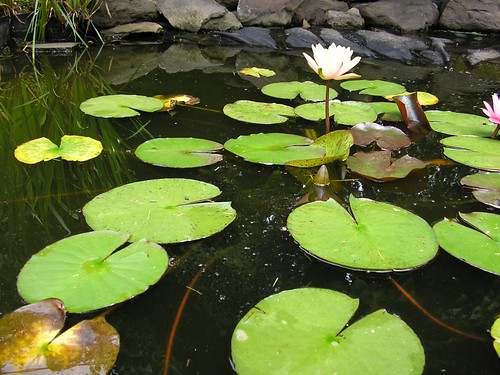
to tadpoles (here we brought some inside to study them):
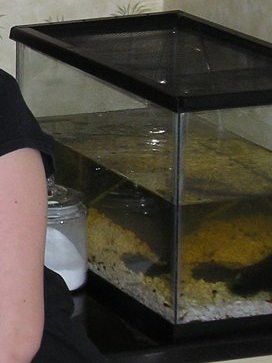
to baby frogs:

to BIG frogs.
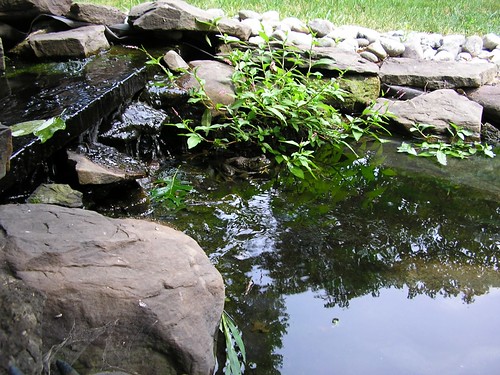
It's one thing to take the kids camping in the wilderness and show them deer. Or take them to the zoo to see more exotic creatures. But getting up close and personal with wildlife in your own backyard... nothing beats it.
To read more about creating a certified wildlife habitat in your backyard, visit the National Wildlife Federation.
No comments:
Post a Comment